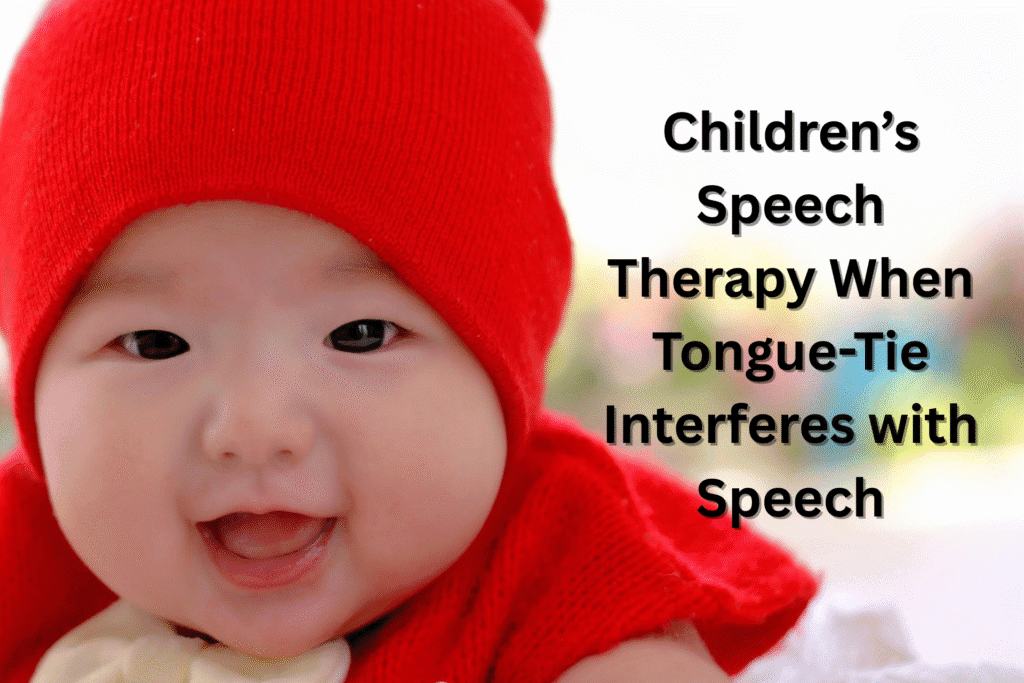Childrens Speech Therapy When Tongue-Tie Interferes with Speech
Tongue-tie, or ankyloglossia, happens when the band of tissue under the tongue is unusually tight and limits tongue movement. That restricts the way the tongue can move. Although some babies don’t have any problems, others encounter difficulty such as sucking during feeding. Later on in life, this may manifest as interference in speech. This is because the tongue plays a key role in forming clear and understandable speech sounds. Hence, childrens speech therapy sessions may be needed.

Speech Difficulty Caused by Tongue-Tie
To produce the sounds “l,” “r,” “s,” or “t,” the tongue must lift and stretch. However, when free movement is not possible, speaking can sound slurred or muddled. Without children’s speech therapy, kids who have tongue-tie might refuse to speak. This also leads to anger and frustration when not understood. The good thing is that parents and doctors can detect it early in infancy. This is because feeding difficulty is often the first sign.
Signs That Require Attention
Each child shows varied effects from tongue-tie. However the common signs of tongue-tie include heart-shaped appearance of the tongue at the tip and difficulty protruding the tongue. During infancy, some signs often observed include poor latching during nursing and clicking noises while feeding. Because of this, these babies often have a slowed weight gain. Slurring or uncertain speech, as well as restricted range of mouth motion can be noticed later in life. Hence, needing children’s speech therapy.
How Childrens Speech Therapy Facilitates Progress
Childrens speech therapy provides activities to strengthen the muscles needed to produce clear speech. Oftentimes, the child needs to be shown by therapists how to move their tongue more effectively and produce clear sounds.
In some cases, children might also require a minor tongue-release surgery. Childrens speech therapy can help make the speech better before and after the procedure. This will focus on exercises to strengthen muscles, playful practice of sounds and increasing clarity in everyday speech.
Inside a Typical Childrens Speech Therapy Session
Play-based learning is what is used for childrens speech therapy sessions. The child might be asked to blow bubbles, play with mirrors, or sing to develop strength and control. Therapists may also guide parents with practical ways to support their child’s speech development at home. This partnership accelerates the development of skills.
Take Action and Schedule an Assessment Early On
Tongue-tie isn’t only about eating. If your child has trouble with speaking, get guidance. We at Speech Link assist children in developing clear speech, in collaboration with medical interventions.
